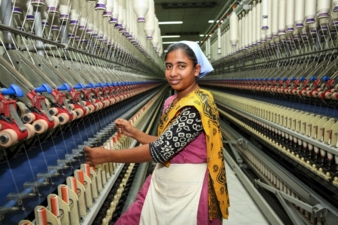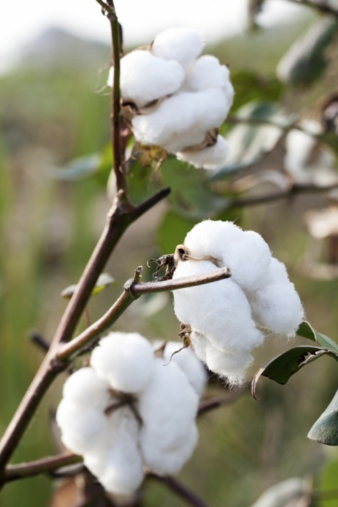27/10/2015 — auf Deutsch lesen
Supply chain's black box
The way that processes are outsourced makes textile production a black box – and for as long as this situation persists, the industry will be paying no more than lip-service to the issue of sustainability, while the textiles supply chain represents an uncontrollable risk factor for manufacturers. Introducing transparency into the supply chain is a key task for the future of the textile industry.
It is a challenge that is being taken up by more and more businesses. The solution lies in a transparent supply chain: the product being manufactured has to be (conceptually) broken down into its constituent parts, each individual step in the manufacturing process traced back to the beginning and the results made accessible to the public.
In essence, it revolves around three core issues: supplier management, management of chemicals and communication with consumers. The more complexity and ramifications there are in the flow of materials, the greater the challenge.
For a company such as Marc Cain which, no doubt for this very reason, keeps a large part of its production chain in Europe, it is relatively easy to make production transparent. Woven fabrics, materials, jersey and knitting yarn all come directly from Italy. They are knitted, finished and printed at the company's base in Bodelshausen, Germany. The making-up process is carried out by partners in Romania and Hungary. As far as use of chemicals and wages for employees are concerned, European law applies. For a large proportion of the textile supply chain, therefore, it is very easy for Marc Cain to create transparency.
Things are very different for a fast-fashion producer like H&M. While Marc Cain's production companies employ about 2000 people, some 1.6 million are employed indirectly on behalf of the Swedish chain store operator, in sewing shops in Europe and Asia. Management of suppliers and chemicals across 900 companies operating 1900 factories in China, Bangladesh, India and so on is unquestionably a totally different kettle of fish. And that's only at tier 1, the first level of the supply pyramid.
A paradigm shift is required in the textile industry, said Karl Borgschulze of Hong Kong-based Consulting Service International recently at the information day on CSR and sustainability organised by DTB (Dialog Textil und Bekleidung) in Aschheim, close to Munich. What with new distribution channels, increasing demands from environmental and social standards, changing fashion and development cycles and enormous price and financial pressure, he said the textile industry was facing major challenges.
The paradigm shift would involve managing the demand profile throughout the whole length of the production chain. Borgschulze believes transparency in a company's production processes will in future be a requirement for all sourcing routes. He describes a 5-stage process to achieve this: creating transparency, defining the demands, monitoring, certification and documentation.
H&M and Jack Wolfskin have recently reached major milestones where transparency is concerned. For some time now, Jack Wolfskin has made public not only the identities of its suppliers but also the full results of the audits, while in the last year H&M has surprised the markets by revealing who its own producers are. Now the Swedes have gone a step further by revealing their most important tier 2 suppliers – that is, the spinning and weaving companies. In an interview to coincide with the release of the latest H&M sustainability report, the company's CEO, Karl-Johan Persson, described transparency as 'the starting point for change in our business'.
True, the fashion industry has a long way to go before there is full transparency in the textile production chain. But there is consensus in the view that step by step, it is a path that must be taken. Transparency, as a starting point for greater sustainability in the textile industry, is not a matter of wishing or wanting but an essential precondition for rising to the challenges of the future.
[Jana Kern]
Initiatives, standards bodies and campaigners including the Business Social Compliance Initiative (BSCI), the Fair Wear Foundation, the Sustainable Apparel Coalition and the German Textiles Partnership, as well as the Global Organic Textile Standard (GOTS), ZDHC and Bluesign, not to mention Greenpeace and its DETOX campaign – all of these initiatives have gained a lot of ground in recent months. An indication that more and more companies are taking seriously the question of how to create transparency in their supply chains.
In this series until now published:
Part 1 “Not if, but how“





